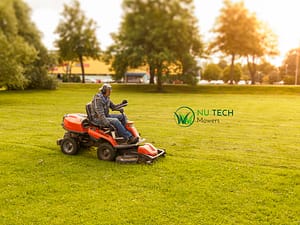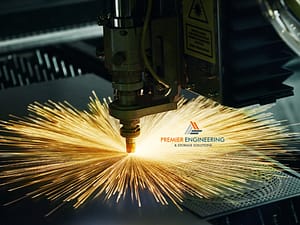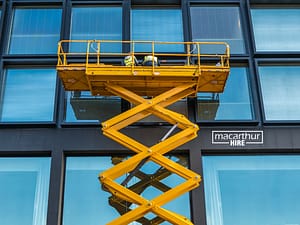Timberwood panels are becoming increasingly popular for outdoor applications due to their durability, versatility, and aesthetic appeal. These panels are suitable for a wide range of uses, including decking, fencing, siding, and other exterior applications. They offer a natural and elegant look that enhances the beauty of outdoor spaces while providing the strength needed to withstand various weather conditions.
Whether you are renovating your garden, building a new deck, or upgrading your home’s exterior, timberwood panels provide an excellent solution. By choosing the right type of panel and ensuring proper installation and maintenance, you can enjoy the benefits of these versatile materials for years to come.
Benefits of Using Timberwood Panels Outdoors
Durability and Weather Resistance
One of the primary benefits of using timberwood panels outdoors is their exceptional durability and weather resistance. These panels are designed to withstand harsh weather conditions, including rain, snow, and intense sunlight. Timberwood panels are often treated with special finishes and coatings that enhance their resistance to moisture, UV rays, and pests, ensuring they remain in excellent condition for many years.
Aesthetic Appeal and Versatility
Timberwood panels add a touch of natural beauty to any outdoor space. They are available in various finishes, textures, and colors, allowing you to customize the look of your exterior to match your style preferences. The versatility of timberwood panels makes them suitable for a wide range of applications, from creating elegant garden fences to constructing robust decking areas. Their timeless appeal and adaptability make them a popular choice among homeowners and designers.
Choosing the Right Timberwood Panels for Outdoor Use
Factors to Consider: Type of Wood, Thickness, and Finish
When selecting timberwood panels for outdoor use, it’s important to consider several factors to ensure you choose the best option for your specific needs:
- Type of Wood: Different types of wood offer varying levels of durability and aesthetic appeal. Common choices include cedar, teak, and pressure-treated pine, each with its own unique characteristics and benefits.
- Thickness: The thickness of the panels affects their strength and durability. Thicker panels are generally more robust and suitable for high-traffic areas or heavy loads.
- Finish: The finish applied to the panels can enhance their resistance to weather and pests. Options include oil, stain, and sealant, each providing different levels of protection and visual appeal.
Comparing Different Types of Panels: Solid Wood, Laminated Boards, and Veneers
Understanding the differences between solid wood, laminated boards, and wood veneers suppliers can help you make an informed decision:
- Solid Wood: Offers a natural and authentic look with excellent durability but may require more maintenance.
- Laminated Boards: Consist of layers of wood bonded together, providing enhanced stability and resistance to warping.
- Veneers: Thin layers of high-quality wood applied over a core material, offering a cost-effective solution with the appearance of solid wood.
Weather-Resistant Timberwood Panels
Features of Weather-Resistant Panels
Weather-resistant timberwood panels are specially treated to endure outdoor conditions. Key features include:
- Moisture Resistance: Treated to prevent water absorption and reduce the risk of rot and decay.
- UV Protection: Coated to protect against sun damage, which can cause fading and deterioration over time.
- Pest Resistance: Treated to repel insects and other pests that can damage the wood.
Popular Choices for Outdoor Applications
Certain types of timberwood panels are particularly well-suited for outdoor use due to their natural properties and treatments:
- Cedar: Known for its natural resistance to decay and insects, making it a popular choice for decking and fencing.
- Teak: Highly durable and resistant to water and pests, ideal for high-end outdoor furniture and decking.
- Pressure-Treated Pine: Treated with preservatives to enhance its durability and resistance to moisture and insects, commonly used for various outdoor structures.
Applications in Decking, Fencing, and Siding
How to Use Timberwood Panels for Decking
Timberwood panels are an excellent choice for decking due to their durability and natural aesthetic. Here are some tips for using timberwood panels in decking:
- Preparation: Ensure the ground is level and prepare a solid foundation.
- Panel Selection: Choose timberwood panels that are thick and durable, suitable for high-traffic areas.
- Installation: Secure the panels using appropriate screws and fixings, ensuring they are evenly spaced to allow for expansion and contraction.
- Finishing: Apply a protective finish to enhance the panels’ resistance to weather and wear.
Benefits of Timberwood Panels in Fencing
Using timberwood panels for fencing offers several advantages:
- Privacy and Security: Timberwood panels create solid barriers that provide privacy and security for your property.
- Aesthetic Appeal: The natural look of timberwood enhances the visual appeal of fences, blending seamlessly with outdoor environments.
- Durability: Properly treated timberwood panels are resistant to weather conditions and pests, ensuring long-lasting fences.
Using Timberwood Panels for Siding and Cladding
Timberwood panels are also ideal for siding and cladding applications:
- Insulation: Timberwood panels provide excellent insulation, helping to maintain indoor temperatures.
- Protection: They protect the building structure from environmental elements such as rain, wind, and UV rays.
- Versatility: Available in various finishes and styles, timberwood panels can be customized to match the architectural design of any building.
Maintenance Tips for Outdoor Timberwood Panels
Routine Maintenance and Cleaning
Regular maintenance and cleaning are essential to keep timberwood panels in optimal condition:
- Cleaning: Use a mild detergent and water to clean the panels, removing dirt and debris. Avoid using harsh chemicals that can damage the wood.
- Inspection: Regularly inspect the panels for signs of damage or wear, such as cracks, splits, or warping.
- Repair: Address any damage promptly to prevent further deterioration. Replace damaged panels if necessary.
Protecting Timberwood Panels from Moisture and Pests
Protecting timberwood panels from moisture and pests ensures their longevity:
- Sealant Application: Apply a water-resistant sealant to prevent moisture penetration and reduce the risk of rot.
- Pest Control: Treat the panels with insect repellent to protect against termites and other wood-boring insects.
- Proper Ventilation: Ensure adequate ventilation around the panels to minimize moisture buildup and promote drying.
Choosing the Right Finish for Outdoor Use
Types of Finishes: Oil, Stain, and Sealant
Selecting the right finish for your timberwood panels is crucial for enhancing their durability and appearance:
- Oil: Penetrates the wood, enhancing its natural color and grain while providing moisture protection. Needs reapplication periodically.
- Stain: Adds color to the wood and offers UV protection, preventing fading. Available in various shades to match your design preferences.
- Sealant: Creates a protective barrier on the wood surface, guarding against moisture, UV rays, and pests. Often used in combination with stains or oils for added protection.
How to Apply and Maintain the Finish
- Preparation: Clean the panels thoroughly and sand the surface to ensure the finish adheres properly.
- Application: Follow the manufacturer’s instructions for applying the chosen finish. Use a brush, roller, or sprayer for even coverage.
- Maintenance: Reapply the finish as needed, typically every 1-3 years, depending on exposure to weather conditions.
Working with Veneer Suppliers and Laminated Board Providers
How to Find Reliable Veneer Suppliers
Finding a reliable veneer supplier is key to ensuring the quality of your timberwood panels:
- Research: Look for suppliers with positive reviews and a solid reputation in the industry.
- Quality Assurance: Check if the supplier offers quality guarantees and adheres to industry standards.
- Samples: Request samples to evaluate the quality and finish of the veneers before making a large purchase.
Benefits of Using Laminated Boards for Outdoor Applications
Laminated boards offer several benefits for outdoor applications:
- Stability: Laminated boards are less prone to warping and splitting compared to solid wood, making them ideal for outdoor use.
- Strength: The lamination process enhances the structural integrity of the boards, providing additional strength and durability.
- Cost-Effective: Laminated boards can be more affordable than solid wood while offering similar aesthetic and performance benefits.









